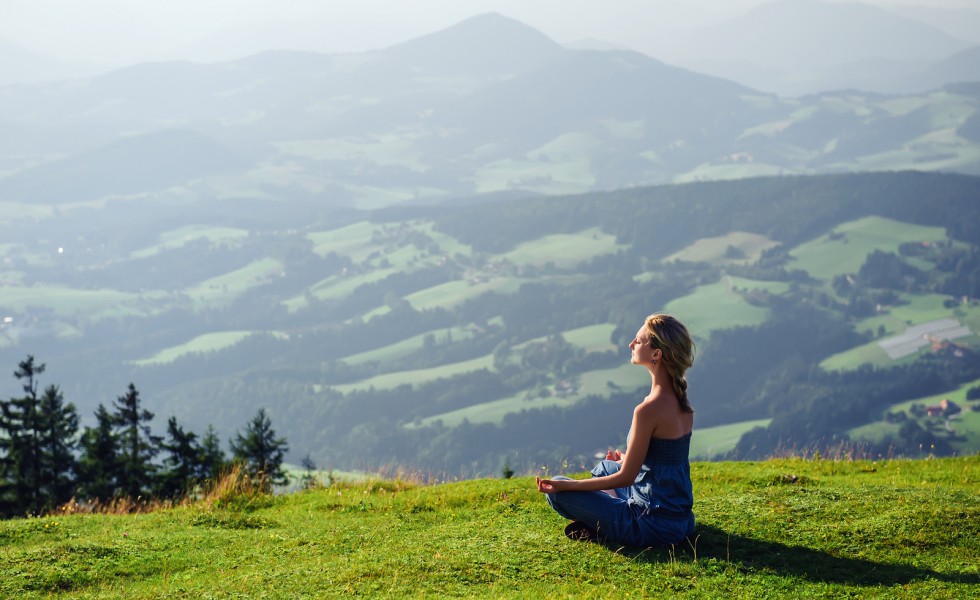Yoga for Guides, Part II: Meditation

By Richard Parker, Rock Instructor & Certified Kripalu Yoga Instructor
In the first article (Yoga for Guides, Part I), I discussed some of the areas of the body that take a beating from guiding and some of the poses used to address them. This piece focuses on breathing techniques and meditation. The third in this series of articles will include some of the specific benefits guides could gain from a Yoga practice that includes postures (asanas), breathing techniques, and meditation. Just a reminder, it will not be possible to learn these breathing techniques from this article, but my hope is that it will motivate some to find a qualified teacher.
Conscious breathing is a key to practicing postures and some suggest that you are “doing yoga whenever breathing consciously.” Matching breath to movement anchors one’s attention in the present moment and leads to better focus. This attention can help reduce stress and create a sense of ease within the effort, not unlike what we feel when we are “in the zone” climbing. Each time one practices asanas, one should keep the awareness anchored on the breath, always returning to it when the mind wanders.
Through simple and easy to use pranayama (breathing techniques), the ancients learned ways to quickly stimulate both the sympathetic (fight or flight) and parasympathetic (calming) nervous systems. Pranayama is used in asana practice to fire up the system for challenging poses and holds (like “kapalabhati”), as well as to calm and center prior to beginning the practice or prepare for final relaxation pose or meditation (like “nadi shodhana” and “dirga”). Although it may be difficult for the novice to understand, pranayama (breathing techniques) can be an extremely powerful practice on its own, and the ability to calm or excite the body could be especially handy for guides off of the mat. Over the years I can think of many times guiding and in other settings when being able to lower heart rate, blood pressure, and reduce the stress hormone cortisol is very useful in leading to good decisions under stress. Similarly, firing up the sympathetic nervous system could be useful right before a huge effort. These techniques are effective when practicing postures and meditating, but are also great any time you need to relax or gear up.
In the history of Yoga, meditation appears first. Strictly a spiritual practice, meditation was the primary technique used to link the practitioner with God. The ancients learned that their mediation sessions were most productive when preceded by pranayama and asanas, and the full practice of Yoga was developed to support meditation. At present many people world-wide practice regular meditation outside of a spiritual context to reduce stress, gain relaxation, and boost health. Science strongly supports meditation as a means to accomplish these goals and more. Once again, the application for guides is obvious, and amazingly the positive effects of meditation can be enjoyed with a daily session of even five-10 minutes (although 15-20 minute duration would be considered optimal). Before a challenging day of guiding or after such a day, a session of meditation will not only feel good but also provide physiological benefits like the reduction of the stress hormone cortisol, lower heart rate, reduced blood pressure, etc.
It is my hope that these two articles will encourage you to consider adding Yoga to your daily routine for health, stress relief, and muscle and joint health. At age 60, I have no doubt about how this practice is helping me to continue with my life as a guide and athlete. More importantly, this practice has brought me increasing equanimity and well being. Please email me if you have any questions.
A climbing guide since 1977, Richard is a certified Rock Instructor and certified Kripalu Yoga Teacher.












